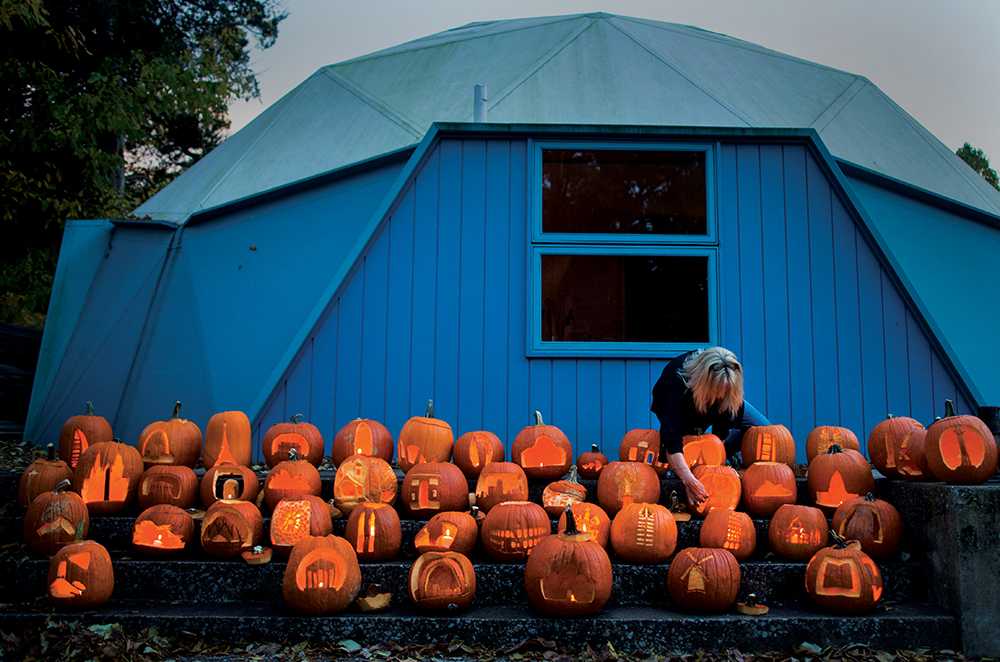Buckminster Fuller: Southern’s innovator and inventor
March 4, 2019
Richard Buckminster Fuller was the inventor of the geodesic dome and a professor at SIU from 1959 to 1970.
Fuller’s geodesic dome is a structurally secure sphere built out of equilateral triangles. This design has been used in various fields of study including architecture, astronomy and counterintelligence.
His other inventions included the Dymaxion car, a progenitor to a possible “Omni-Medium Transport” which could traverse land, air and water.
Advertisement
Another was the Dymaxion house, a prototype building would have a rotating structure on top of the house. In theory, the structure would rotate around a central mast and have natural wind for cooling and air circulation.
“In April 1960 Buckminster Fuller assembled his geodesic dome home in Carbondale, Illinois and lived in it with his wife Anne until 1971,” according to the RBF Dome Home website. “Considered to be one of the strongest and most efficient structures known to humankind, the geodesic dome is Buckminster Fuller’s most enduring legacy.”
Fuller patented the dome home in 1954 as a solution to humanity’s need for safe, affordable and accessible housing, according to the site. “This original dome home was constructed by Pease Homes, a company who licensed Fuller’s 1954 patent in hopes of stimulating a dome home construction boom.”
He was born July 12, 1895 in Milton, Massachusetts. He attend Harvard University and was affiliated with the Adams House, a dormitory designed to provide high-end accommodations for wealthy Harvard undergraduates. He was expelled for spending all his money partying with a vaudeville troupe.
Later readmitted, Fuller got expelled again due to irresponsibility and a lack of interest. He said once he was a non-conforming misfit in the fraternity, according to Martin Pawley’s book titled ‘Buckminster Fuller.’
Fuller was a professor in the Art and Design department at SIU from 1959 to 1971.
“Bucky is a unique figure in Carbondale history, and a grandfather of the green movement,” according to the site. “He produced some of his most important work during his time as a distinguished University Professor at Southern Illinois University Carbondale from 1959 to 1971.”
Advertisement*
While a professor at Southern, Fuller made the cover of Time Magazine and was nominated for the Nobel Peace Prize. Additionally, during his twelve years in Carbondale he produced some of his most influential writing; more than a quarter of his 23 patents and was bestowed of nearly half his 48 honorary doctorates.
He would travel constantly because of his global popularity. It is said he wore three watches simultaneously at any given time– one for his office in Carbondale, one for whatever timezone he was in and one for whatever timezone he was going to next.
During his tenure at SIU, Fuller’s geodesic domes were used to house radars that detected possible Soviet bombings known as the Distant Early Warning line.
The FBI knew of Fuller’s involvement in the project, and kept a dossier on Fuller because of his possible Soviet connections.
According to the FBI file on Fuller, an official from the American Soviet Science Society released a membership list from October 1946 which had Fuller’s name on it and categorized him in mathematics and engineering.
Fuller’s connection to the DEW Line and an older Russian science society was not the only reason the FBI kept tabs on him. They also monitored his time with an SIU student in 1965, whose name was redacted in the files, because the student was a suspected Soviet agent.
The FBI file said Fuller was very cooperative with federal agents about his contact with the suspected agent.
“[REDACTED] planned to contact Fuller,” the FBI file said. “[Fuller] volunteered information concerning his contact not only with [REDACTED] but with other Soviets over a period of years.”
While there were no details of an apprehension of the suspected Soviet, Fuller was never targeted as an enemy of the state.
Arts and Entertainment Editor Jeremy Brown can be reached at jbrown@dailyegyptian.com.
To stay up to date with all your southern Illinois news, follow the Daily Egyptian on Facebook and Twitter.
Advertisement


